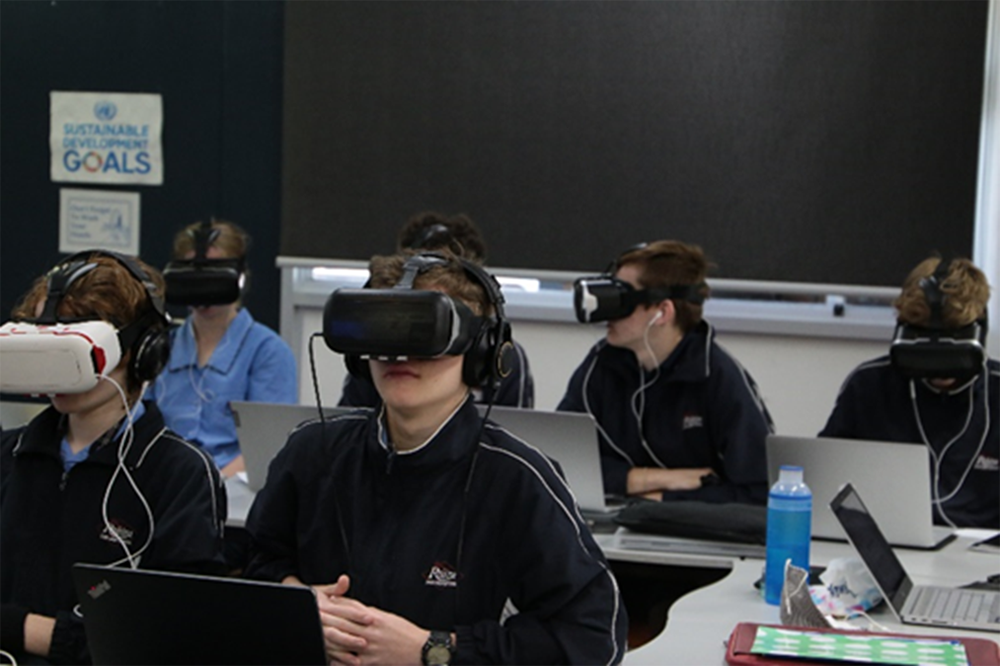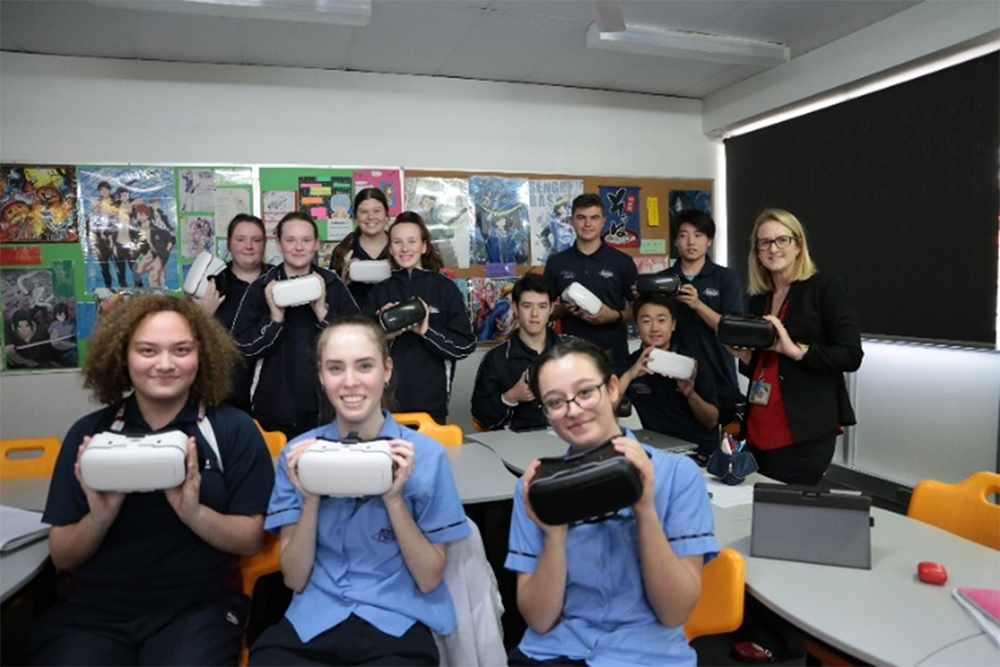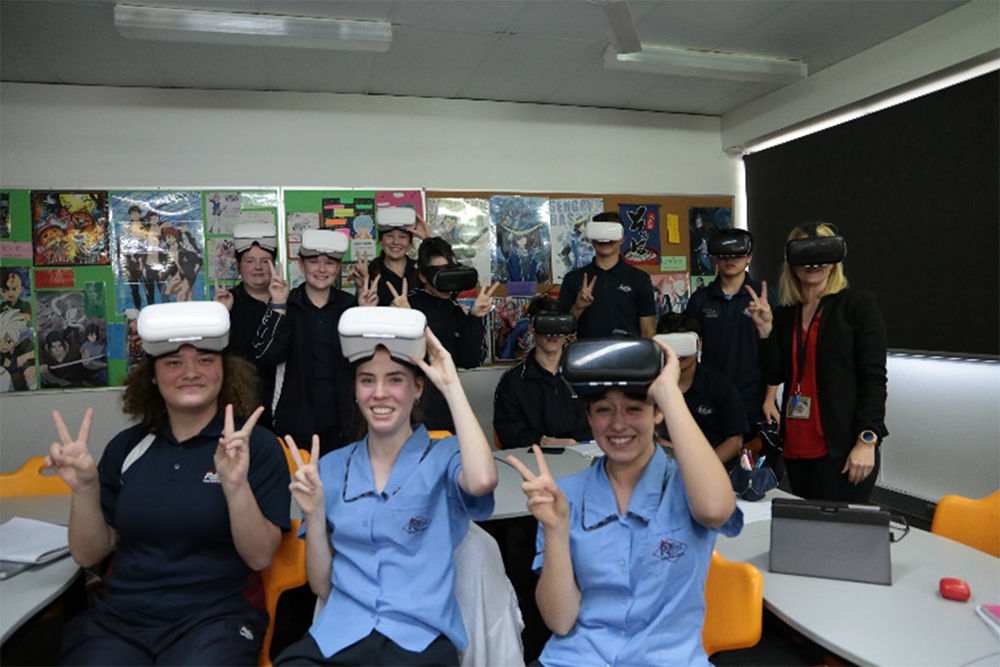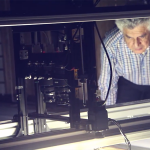VR技術を用いたバーチャル修学旅行体験報告
2020年06月15日
はじめに
2020年初めから全世界を襲った新型コロナウィルス感染症は近代史上、まれに見られる規模の感染症となった。
そのため、あらゆる集会は禁止され、飛行機も飛ばなくなるなど、旅行、観光は大きな影響を受けた。
オーストラリアでも大学、高校をはじめ学校への影響も大きく、休校を余儀なくされた。
日本への修学旅行を楽しみしていた学生たちについては、当然、修学旅行そのものがキャンセルとなり日本の文化財に触れる機会を失った。
しかしながら、世界文化遺産仁和寺からVR技術を用いてバーチャル修学旅行を行ってはどうかとの申し出により、ゴールドコーストにあるロビナ高校は、先端イメージング工学研究所の協力のもと、学校が再開された2020年6月4日にバーチャル修学旅行を実施し、日本文化の魅力をVR技術により体験し、大きな反響と興奮をもたらしたので、ここにその時の様子と学生らの声を紹介したい。
バーチャル修学旅行引率者 《ゴールドコースト》 ロビナ高校 ミシェールグレイ先生
バーチャル修学旅行団受入 《京都》総本山仁和寺
バーチャル修学旅行企画・支援 《京都》(一社)先端イメージング工学研究所 井手亜里 京都大学名誉教授
仁和寺3Dヴァーチャルツアー(英文より)
オーストラリア ゴールドコースト ロビナ高校
日本語科ミシェールグレイ先生からの報告書
私たち日本語コースの11年生は技術と旅行について勉強しています。 学生は、海外旅行についてと技術がどのようして旅行内容の決定とプラニングに影響するかを勉強しています。
私たちは9月に日本への修学旅行が決まっていたのですが、COVID-19感染症によりキャンセルになりました。
そのため、学生達が日本の文化と日本語について学ぶ代わりの方法を探すことが重要な課題になりました。
学生達は、目的とされる勉強、旅行の代わりになり、また物理的な旅行の代わりにもなる、新しい、創造的な方法と技術を学ぶ必要がありました。
この機会を、世界文化遺産仁和寺と京都大学の技術を使った先端イメージング研究所(社)は与えてくれました。
殆どの学生は仮想現実、3D技術を使っての経験はありませんでした。
ましてや3D技術を使って日本文化体験の経験などありようがありませんでした。
これは確かに、学生にとって初めての体験であり、学校にあったVRヘッドセットを使う良い機会でもありました。
11年生の学生らは 仁和寺3Dのホームページにアクセスして、ヘッドセットとイヤホンを使って、日本旅行を体感しました。
VRヘッドセットは簡単に扱うことができました。
学生らは仁和寺3DツアーとVR仮想現実の二つの授業を楽しんで、その後アンケートに答え、3DツアーとVRに関する感想をまとめると、以下のようになりました。
- いろいろな角度で美しい御室桜を360度で鑑賞できた
- 日本の寺院の色彩と気候を含めて四季を経験できた
- 空からのドローンの映像は本当に仁和寺の上を飛んでいる感じだった
- 寺院(仁和寺)の歴史に関する説明は、十分かつ丁度よい長さだった
- 非公開の建物の中まで鑑賞できた
- 景色や音も含め、日本にいるような気分になった
- これまでと違う方法で京都を発見できた。次は、日本に行って、自分の目で見たい
- 将来日本に旅行できる日をドキドキしながら待っている
- 高品質のビデオは文化財と寺院の現実的な感覚を作り出す
- 学生らは VR技術をほかの分野で使って、勉強できることを理解した
- VR技術が、実際寺院に行けない人々(体の不自由な方、病気の人、あるいは経済的に行けない人々)に、いかに役に立つかが理解できた。
VR授業の後に、学生全員が将来日本に行くのが楽しみになったと言っています。
学生らはVR授業をとても楽しんだようで、同じような活動を又したいと言っています。
私たちはより多くのロビナ高校の学生やコミュニティにも、VR技術を使った日本旅行のチャンスを広げたいと思います。
私たちはこれから、教育助成金を得て機材を準備することで、より簡単にVRを体験できるようにして、さらに日本文化の理解を広めたいと思います。
ロビナ高校の教師と学生は仁和寺と先端イメージング工学研究所に「日本へのVR旅行」が実現できたことを心から感謝します。
(原文)
Teacher Reflections – Ninnaji 3D Tour
Robina State High School, Australia
Michelle Gray – Year 11 Japanese Teacher
Currently, Year 11 students who study the Japanese language course are learning about travel and technology. Students are studying global travel and the various ways technology is used to influence travel decisions and plans. These Year 11 students were due to travel to Japan September 2020 on the Robina High Japan Trip. However, due to the COVID-19 pandemic, the trip was cancelled. Students now need to explore other ways to engage in Japanese culture and language. They need to learn about new, innovative methods and technology, relevant to their studies about travel and alternatives to physically travelling to Japan. An opportunity to engage with 3D technology came from Advanced Imaging Technology Research Center (AITReC), The Ninnaji Temple 3D Project.
Most students have never used VR or 3D technology to experience and explore Japan. This was certainly a new experience for students and a chance to use the school’s VR headsets. The Year 11 Japanese classes explored the Ninnaji Temple 3D website and other UNESCO heritage sites through VR headsets and earphones to complete the feeling of being in Japan. The VR headsets are the simple ocular headsets which operate through inserting a mobile phone and app. Students thoroughly enjoyed the two VR lessons, completing a survey for the Ninnaji 3D Tour and a reflection about their VR engagement prior and after the lessons in Japanese.Overall, student highlights of the 3D website/videos were;
- Seeing beautiful cherry blossoms from all angles – 360 degrees
- Experiencing the 4 seasons of Japanese temples – colours and weather
- Flyover (drone) footage felt like you were walking through the temple
- Understanding information about the history of the sites – a good length of information
- Viewing areas not on display to the public
- Feeling like you were in Japan, sights and sounds
- It was a different and fun way to explore Kyoto – we now want to go and see it in Japan!
- Creating excitement for when we can travel to Japan in the future
- Excellent quality video creates a realistic view of the artefacts and temples
- Students now understand how to use VR technology to use for learning experiences in other curriculum areas
- Understanding how VR technology can help people who can’t travel to the temples (inclusive) – disabled/unwell people, people who can’t afford to go.
All students expressed their excitement for travelling to Kyoto and Japan in the future after using VR in the lessons. Students also really enjoyed the VR experience and are eager to do activities like this again. We would like to extend more students at Robina High and community, the opportunity to engage with and virtually travel to Japan using VR technology. We intend to apply for funding and grants to assist with buying more advanced and upgraded VR headsets so students without mobile phones and community members without understanding of the technology, can access this method of exploring Japan with ease. Robina High students and teachers wish to express sincere thanks to Advanced Imaging Technology Research Center (AITReC) and Ninnaji Temple for their resources, support and encouragement in “VR travel to Japan.”








